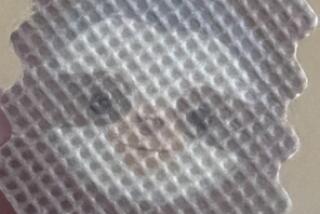Groups of Wrath : All through school kids join, lead and are rejected by cliques. How they deal with it helps mold their characters.
- Share via
An 11-year-old boy, routinely derided by a clutch of popular schoolboys, is so emotionally distraught that he is prescribed lithium to cope.
A popular fifth-grade girl describes the payoff her clique reaps from taunting peers: “We just pester ‘em, aggravate ‘em [to] make us feel better about ourselves.”
When recalling school days and the psychic scars dealt out by the hipsters who deemed us un-hip, for many the teen years come to mind. But the work of Patti Adler, a researcher at the University of Colorado at Boulder, and her husband, Peter, at the University of Colorado at Denver, suggests that young children are not only attuned to clique power, but astutely use exclusivity and the “art of the negative campaign” to raise their status.
Vivian Gussin Paley, a kindergarten teacher for 24 years at the University of Chicago Laboratory Schools and author of a book on the subject (“You Can’t Say You Can’t Play,” Harvard University Press, 1992), says cliques seem to be forming at earlier ages because children are socialized into groups as toddlers in day care. Studies show that children begin rejecting other children in preschool play circles. By kindergarten, they are aware of which children are popular.
The Adlers’ seven-year project is believed to be one of the longest and most comprehensive investigations into the machinations of pre-adolescent cliques. They focused on 200 children in their community who weathered the highs and lows of being “in” and “out” in school, on the soccer field, in neighborhoods and during summer break. The parents interviewed were from mostly white, middle-class families, the children ages 9 to 12. They plan to include the research in a forthcoming book on peer culture.
Cliques are not completely devoid of positive influence. In peer groups, “Children learn social behavior--what is appropriate, inappropriate--and about the consequences of their behavior. Cliques provide children a social identity,” says Martin Kaplan, professor of social psychology at Northern Illinois University in DeKalb.
“Cliques could be very limiting like a strait jacket,” he adds. “If a child gets rejected by a clique, it is not always bad news because you can always discover other things about your identity and realize that you can survive. But if a child is rejected from a succession of cliques it can be very bad.”
More negatively, cliques teach “the fundamental values of conflict and prejudice that may form the basis for racism, anti-Semitism, sexism and other forms of bigotry,” says Patti Adler. “Fear of being ejected or rejected by cliques undercuts independence, good judgment, integrity, loyalty to friends, self-esteem and supports conformity by following leaders’ ideals.”
Among the children the Adlers interviewed was Melody, an unpopular fourth-grader. She describes her efforts to hold onto her best friend, who was recruited by the popular clique and decamped to the in-group:
“I was really worried. If she joined their group, she would have to leave me. She was over there and she told me that they were making fun of me, and she kind of sat there and went along with it. I got mad at her. . . . ‘Why didn’t you stick up for me?’ She said, ‘Because they wouldn’t like me anymore.’ ”
*
The Adlers found that clique members may be accepted and then rejected, but leadership is rarely usurped. Fear of rebuke prevails, as clique members track the arbitrarily selected whims and tastes of the leader. The favored pastime is degrading scapegoats, “because it is fun,” say children quoted in the study. Clique members who don’t partake in humiliating someone are threatened with the same scorn.
Cliques display exclusivity like a peacock fanning its plumage, boasting more parties, more sleepovers and better games than their peers. The leader assigns high or low status to new members and has veto power over who stays and who is pushed out.
“There’s a hypocrisy of values,” says Patti Adler. “Things clique leaders say they value, they later disvalue. An athletic, cool kid who has all the right stuff could get dumped on for wearing the wrong clothes, having the wrong lunch. . . . Criteria are impossible to predict. Anyone could say anything and the rest of the clique would seize on it. They see vulnerability and they go for the jugular.”
Craig, a sixth-grade clique follower, describes the way the clique dominates by picking on less popular members on the playground. The victims “just want to be more popular so they stay in the group. They just kind of stick with it, get made fun of, take it. . . . You do more ridicule, more ridicule and they just keep taking it. . . . You make fun of someone, you get more popular, because insults are what they like.”
Julie, a fifth-grader, describes being enticed into a clique by its leader, Amy, and the aftermath: “Maybe it was for a month that she was nice. And so then she had clawed me into her group, and so she had won me over that way, but then she was a bitch to me once I was inside it, and I couldn’t get out because I had no other friends.”
Integral to the survival of cliques is members’ ability to emotionally manipulate others. To the Adlers’ surprise, boys were as deft at manipulation as girls.
The genders have separate cliques. According to the children in the study, the criteria for girls’ acceptance are beauty, clothes, material possessions and permissive parents. Boys were chosen for athleticism, anti-intellectualism, dominance, defying authority and toughness. “We witnessed kids who dumbed down,” says Peter Adler. “Too much intellect is as much reason for unpopularity as being dumb. You want to be somewhere in the middle.”
*
The power of cliques continues in high school, says Peter Adler, but for teens joining a group is easier because there are more groups than in elementary school, where children’s friends are usually those in their classroom. In high school, “You have the nerds, artists, lesbians, jocks, soc’s, druggies and intellectuals. They see themselves as elite groups, above the others.”
But while high school offers more opportunities for belonging, it also steps up the degree of psychological cruelty. In one game played by a clique of 17-year-old girls observed by the Adlers, a member could elevate her status by getting a boy to call her, spend money on her and break up with another girl for her and then dump him.
Most leaders remain dominant from elementary school through the teen years, the Adlers say. Their daughter, who is a senior, pulled out of a clique in which the leader had reigned from fourth grade through high school. “Our daughter got involved with a more intellectual group and in student government at great personal cost,” Peter Adler says. “She was shunned in the hall by her former clique.”
Short of reaching for Prozac to dull the devastation of witnessing their child’s emotional pain, parents are mostly helpless, say the Adlers. Often parents don’t know if their child is being harassed by a clique. Adult intervention is social ruin, so children don’t report the problem. “Sometimes kids can go home and tell their parents, but if the parents do anything that would be the ultimate. So kids just hold it in,” Peter Adler says.
Many schools take measures to discourage cliques. The younger the children, the more likely they will succeed.
Paley, whose book advocates prohibiting exclusionary play among kindergartners, says, “All of us have been conned into believing that how to choose friends and who to include must be left up to children. I see how sad the rejected children become and how they are not able to concentrate on their work.”
The Adlers say that about half the schools where they conducted their research have anti-exclusion rules governing recess games. “Such rules help keep the more flagrant behavior down and certain situations safer,” says Patti Adler.
But such rules are not likely to dissolve cliques. The best parents can hope for is that their child does not fit in with the clique but also is not a social outcast.
“If you are a parent, you hope your child is in the middle group . . . because there is no leadership dynamic,” Peter Adler says. “But parents need to understand their children’s culture. In their world, their values are just as important as the values we use to stratify or choose our friends. Some kids cope by having a rough exterior, some fold up like a ball and cry. It is a tough road. Everyone goes through some type of experience like this.”


